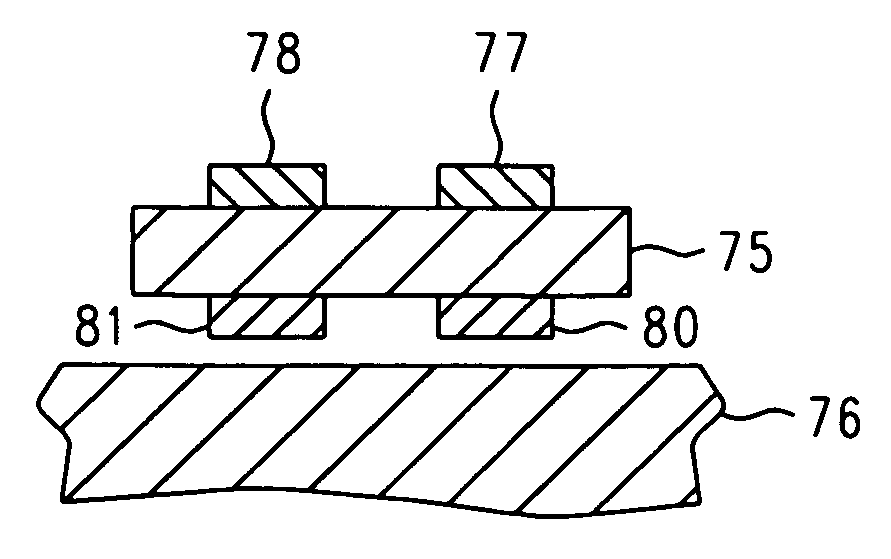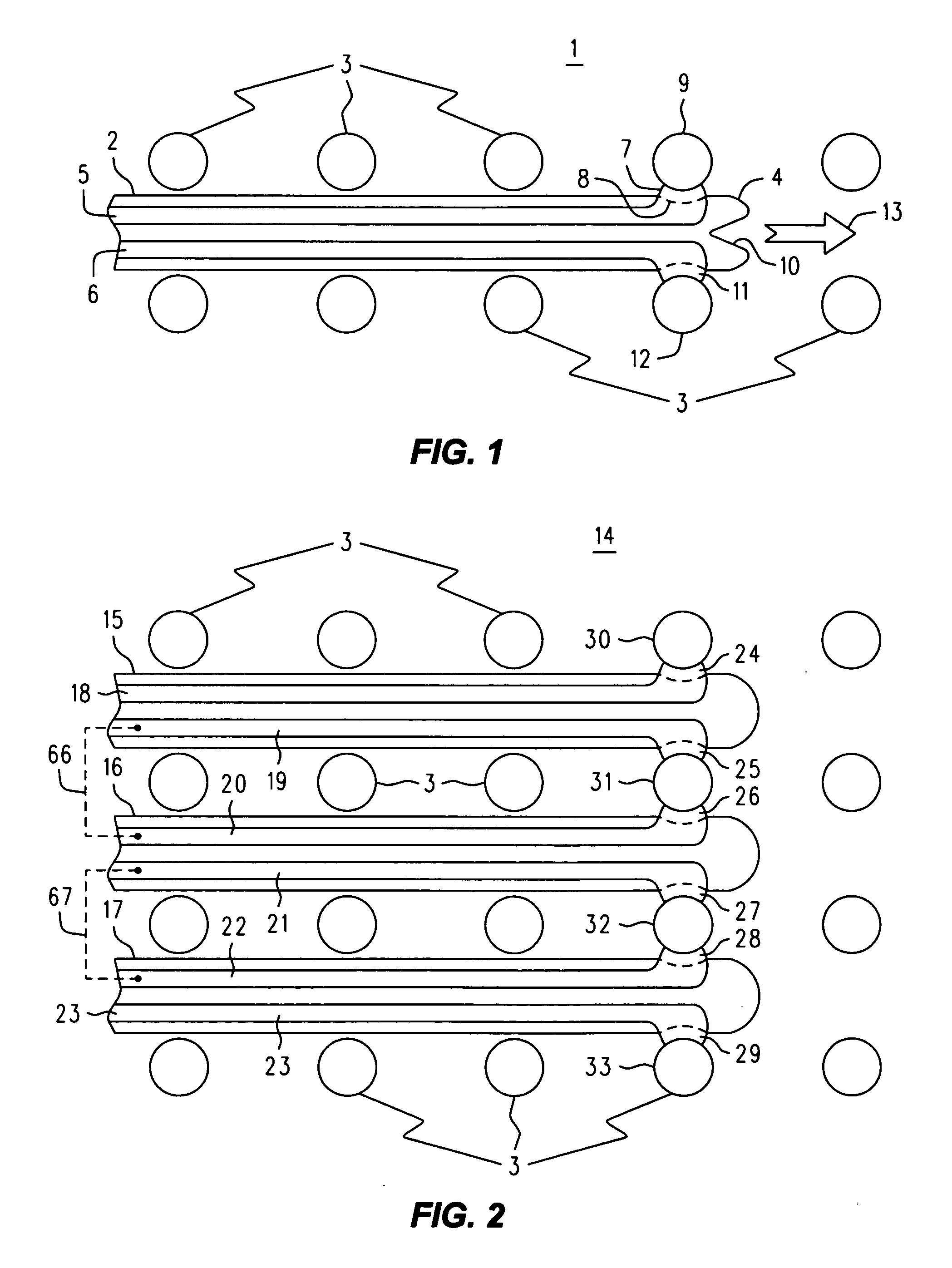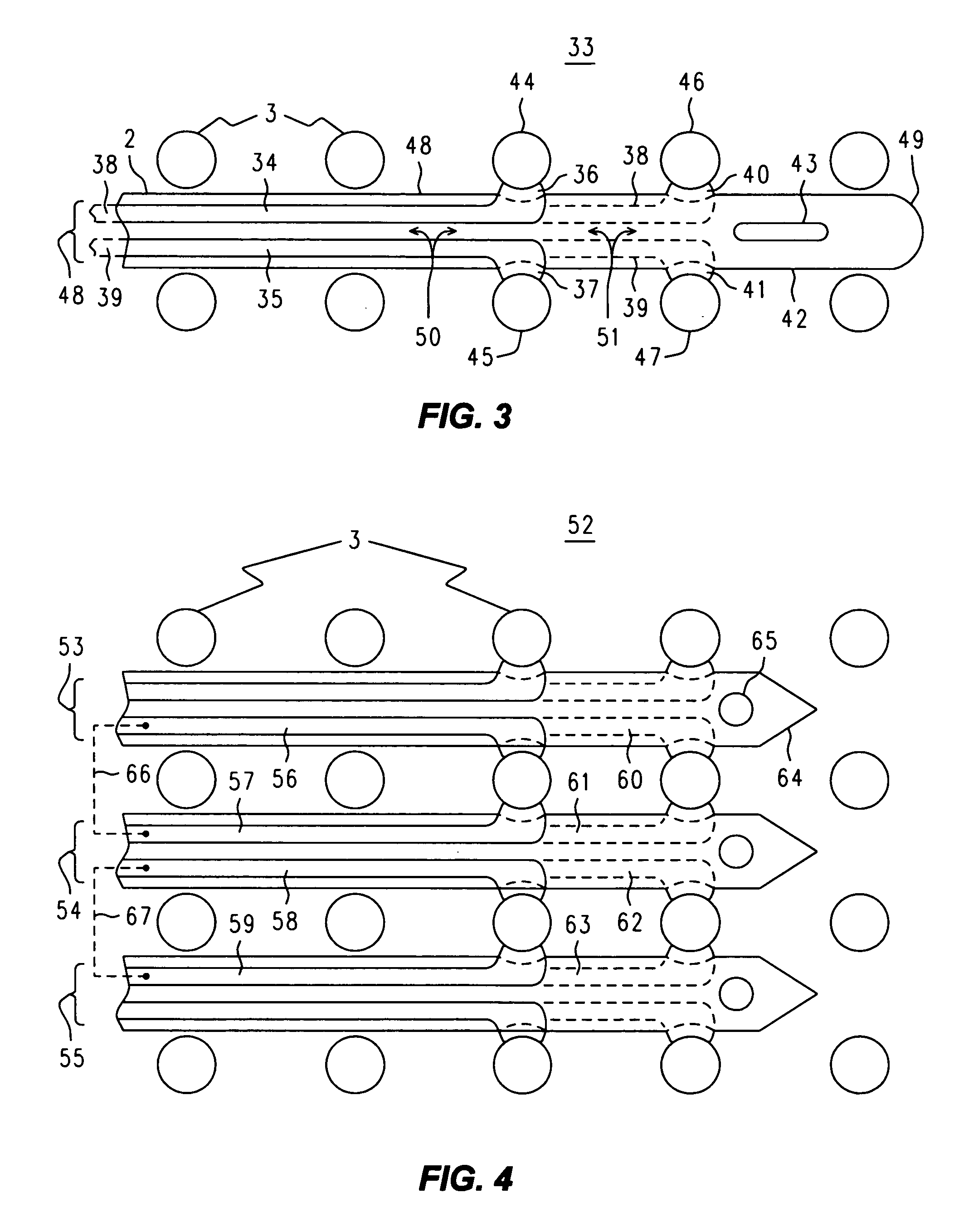Method and apparatus for probing at arbitrary locations within an inaccessible array of leads the solder balls or pins actually connecting a VLSI IC package to a substrate or socket
a technology of vlsi ic and array of leads, which is applied in the direction of electrical testing, measurement devices, instruments, etc., can solve the problems of difficulty in electrical testing and troubleshooting, pins are frequently not accessible, and the state of affairs is by no means guaranteed
- Summary
- Abstract
- Description
- Claims
- Application Information
AI Technical Summary
Benefits of technology
Problems solved by technology
Method used
Image
Examples
embodiment 1
[0047] To assist in the penetration of the arm 2 along the straight path in a direction indicated by arrow 13, the arm 2 may have a rounded nose 4. As an alternative, the rounded nose 4 might shown in this embodiment 1 includes a notch 10 (other alternatives will be presented in due course) whose function would be to increase the ease with which the nose can be compressively warped as it passes between two adjacent solder balls or two adjacent pins, such as 9 and 12.
[0048] To appreciate this notion of compressive warping, note the contacts 7 and 11, respectively formed at the end of the traces 5 and 6. The particular shape of these contacts notwithstanding (these are concave) the maximum distance between the contacts 7 and 11 exceeds the minimum distance between leads 9 and 12. That much is easy to see from the figure. However, it is actually preferred that even when the concavities mate, or almost nearly mate, with the leads 9 and 12, that the contacts 7 and 11 remain in compressio...
embodiment 33
[0056] As it is, the examples of FIGS. 3 and 4 require only four traces on each arm; in the embodiment 33 in FIG. 3 arm 48 has traces 34 and 35 on a ‘top’ side of the arm, which terminate in extended contacts 36 and 37, respectively, while on the ‘bottom’ side of the arm traces 38 and 39 travel to extended contacts 40 and 41, respectively. Contact 44 touches lead 44, contact 37 touches lead 45, both of which are in the same layer of leads. Contacts 40 and 41 touch leads 46 and 47, respectively, both of which are also within a common layer, but which is a different layer than for contacts 36 and 37. Thus the flexible printed circuit substrate for arm 48 need not necessarily in this instance be a multi-layer affair; double sided is sufficient.
[0057] A further difference concerning the embodiment 33 of FIG. 3 is that has an extended nose 49 (which is this instance just so happens to be rounded—it might tapered or pointed as shown in FIG. 4). The nose 49 is extended by the length of reg...
embodiment 85
[0075] We now consider some additional embodiments for an interjacent probe that concern various strategies for touching leads with extended contacts formed upon the arms of an interjacent probe. Refer now to FIG. 7, wherein is shown an embodiment 85, where two arms (there might be only one, or there might be more than two) 86 and 87 each carry a respective single trace (88, 89—temporarily ignore 88a and 89a) that terminates in a corresponding concave contact (90, 91). Contact 90 is to bear against lead 94, while contact 91 is to bear against lead 95. In order to get this to happen through compressive warping, each of arms 86 and 87 includes a respective raised land (92, 93) in the side of the arm opposite the contact (90, 91). These raised lands provide the extra width at the location of the contact to create the compressive warping as land 92 bears against lead 95 and land 93 bears against lead 96.
PUM
 Login to View More
Login to View More Abstract
Description
Claims
Application Information
 Login to View More
Login to View More - R&D
- Intellectual Property
- Life Sciences
- Materials
- Tech Scout
- Unparalleled Data Quality
- Higher Quality Content
- 60% Fewer Hallucinations
Browse by: Latest US Patents, China's latest patents, Technical Efficacy Thesaurus, Application Domain, Technology Topic, Popular Technical Reports.
© 2025 PatSnap. All rights reserved.Legal|Privacy policy|Modern Slavery Act Transparency Statement|Sitemap|About US| Contact US: help@patsnap.com



